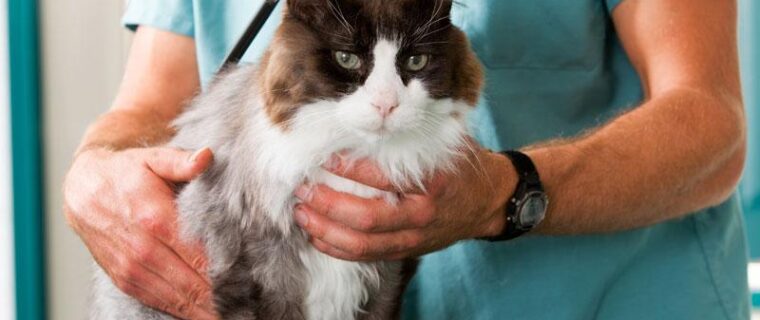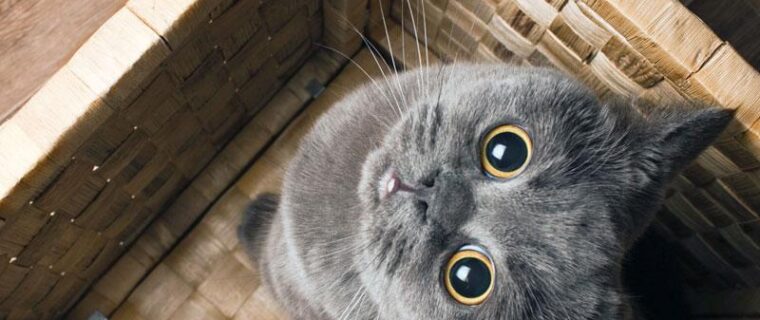Category Archives: Medical Library
Home » Archive by category "Medical Library" (Page %s 6)
Spinal Fractures and Subluxations
- Mar, 07, 2016
- DVSC
- Medical Library
- Comments Off on Spinal Fractures and Subluxations
Fractures land luxations of the cervical and thoracolumbar spine (Figure 1) are commonly managed at the DVSC. Options for treatment include surgical stabilization or conservative treatment with external braces, confinement, and analgesics. The best course of treatment depends on the neurologic status and health of the patient and the expectations of the owne Several […]
Read MoreSplenectomy
- Mar, 06, 2016
- DVSC
- Medical Library
- Comments Off on Splenectomy
Hemoabdomen, or hemoperitoneum, is an accumulation of blood in the abdominal cavity. The condition is a common reason for emergency presentation of pets to the veterinary hospital. While hemoabdomen does occur in cats, it is a more commonly seen condition in dogs. Any age or breed of dog or cat may be afflicted with this […]
Read MoreTotal Hip Replacement
- Mar, 05, 2016
- DVSC
- Medical Library
- Comments Off on Total Hip Replacement
Overview: Total hip replacement is a surgical procedure which reliably restores comfort and near normal function to dogs with a variety of painful hip conditions. Advantages include relatively quick recovery, predictable results, and options if complications are encountered. Disadvantages are cost, and need for extended exercise restriction. Indications: The most common condition for which […]
Read MoreTriple Pelvic Osteotomy (TPO)
- Mar, 04, 2016
- DVSC
- Medical Library
- Comments Off on Triple Pelvic Osteotomy (TPO)
Triple pelvic osteotomy (TPO) remains a valuable surgery in the prevention of degenerative joint disease secondary to hip laxity. The surgeons at DVSC recommend that hips of susceptible breeds be palpated beginning at 4-6 months of age. If laxity is detected, owners should be informed about the benefits of the TPO procedure. The basis […]
Read MoreUnderwater Treadmill
- Mar, 03, 2016
- DVSC
- Medical Library
- Comments Off on Underwater Treadmill
A key component of North Texas Animal Rehabilitation (NTAR) is the underwater treadmill. This treadmill will be used by our patients to minimize postoperative swelling, increase muscle strength and encourage early use of the operated limb. Play movie clip (total time: 0:05) In addition to the […]
Read MoreUpdates in Fracture Management
- Mar, 02, 2016
- DVSC
- Medical Library
- Comments Off on Updates in Fracture Management
The Dallas Veterinary Surgery Center (DVSC) utilizes many resources to help pets recover from their fractures, and the type of fixation is determined by multiple factors including the patient’s age, type of injury, and expected activity level. The goal of fracture fixation is to immobilize the fracture segments to create a healing environment and to […]
Read MoreWobblers Disease
- Mar, 01, 2016
- DVSC
- Medical Library
- Comments Off on Wobblers Disease
Typically the instability involves the C4 – C7 spine which results in hypertrophy of the dorsal longitudinal ligament (which lies on the floor of the spinal canal) resulting in ventral spinal cord compression. A myelogram or CT will identify the ventral cord compression. When traction is placed on the cervical spine, and the myelogram/CT is […]
Read MoreSearch This Site
Medical Library Posts
- 25+ Years of Neurosurgery at the DVSC
- Anal Sac Adenocarcinoma
- Anal Sac Removal, Elective
- Arthritis
- Arthroscopy
- Atlanto-axial (A-A) instability
- Coxofemoral (Hip) Luxation
- Cranial Cruciate Ligament (CCL) Overview
- Cranial Cruciate Ligament (CCL) – Extracapsular Repair
- Cranial Cruciate Ligament (CCL) – Tibial Plateau Leveling Osteotomy (TPLO)
- Cranial Cruciate Ligament (CCL)-Tibial Tuberosity Advancement (TTA)
- Cutaneous Mast Cell Tumors
- Cystotomy and Scrotal Urethrostomy
- Degenerative Myelopathy
- Diaphragmatic Hernia
- Diskospondylitis
- Ear Canal Ablation and Bulla Osteotomy
- Elbow Dysplasia
- Epidural Analgesia
- Episioplasty
- Feline Perineal Urethrostomy
- Femoral Head Ostectomy (FHO)
- Fibrocartilaginous Embolism (FCE)
- Fibrocartilaginous Embolus in Schnauzers
- Fracture Healing by Biologic Osteosynthesis
- Fracture of the Radius and Ulna in Small breed dogs
- Fracture Repair by Circular External Skeletal Fixator (ESF)
- Gastric Dilatation-Volvulus (Bloat)
- Gastrointestinal Foreign Body
- Gastropexy, Elective
- Hip Dysplasia (Overview)
- Hip (Coxofemoral) Luxation
- Incontinence: Urethral Sphincter Mechanism Incompetence
- The Facts About Backs (IVDD)
- Intervertebral Disc Disease (IVDD) Percutaneous Laser Disc Ablation LDA
- Intervertebral Disc Disease (IVDD)- Care of a Paralyzed Pet
- Laryngeal Paralysis
- Lumbosacral Disease
- Mandibulectomy and Maxillectomy
- Medial Patellar Luxation (MPL)
- Microvascular Dysplasia Mimics Portosystemic Shunt
- Minimally Invasive Surgery in Soft Tissue Applications
- Neurosurgical Postoperative Physical Therapy
- Perianal Fistula Management in Dogs
- Perineal Hernias
- Peritoneopercardial Hernias in Dogs and Cats
- Portosystemic Shunts
- Sialocele (Salivary Mucocele)
- Spinal Fractures and Subluxations
- Splenectomy
- Total Hip Replacement
- Tracheal Collapse
- Triple Pelvic Osteotomy (TPO)
- Underwater Treadmill
- Updates in Fracture Management
- Urethral Prolapse
- Wobblers Disease






